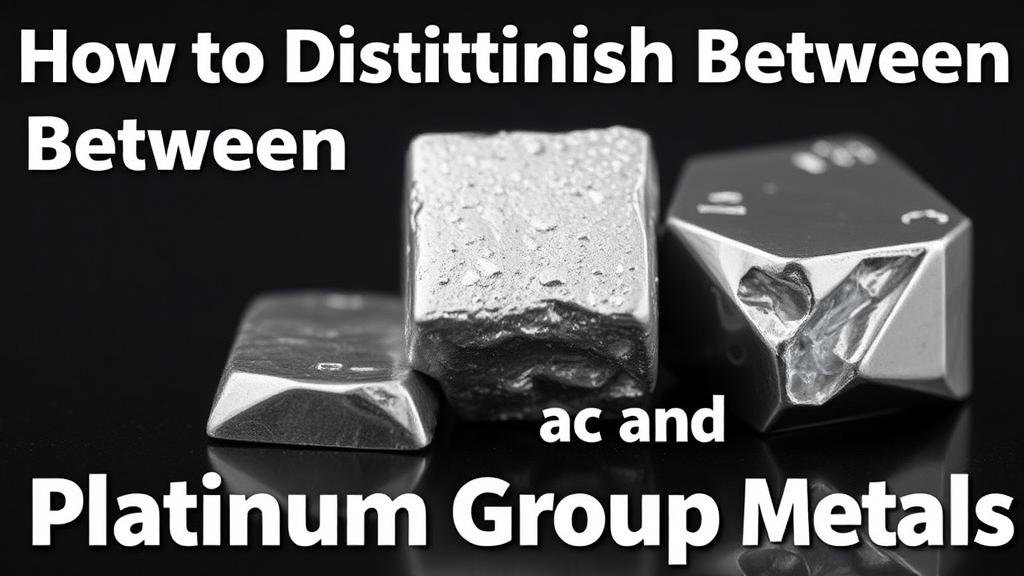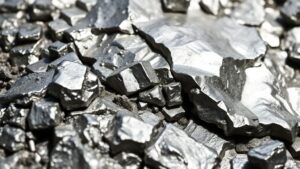How to Distinguish Between Silver and Platinum Group Metals
How to Distinguish Between Silver and Platinum Group Metals
Silver and platinum group metals (PGMs) are both precious metals, highly valued for their economic and industrial applications. But, they exhibit distinct physical and chemical properties that can help one differentiate them. Understanding these differences is critical for investors, jewelers, and industrial professionals alike.
Defining Precious Metals
Precious metals are rare metallic elements with high economic value, often utilized in jewelry, industrial applications, and investment. Silver and the platinum group metals, which include platinum, palladium, rhodium, iridium, osmium, and ruthenium, share some similarities but differ significantly in composition and characteristics.
Physical Properties
Color, density, and malleability are key physical properties that differentiate silver from PGMs.
- Color: Silver is notable for its bright, shiny, and white appearance. PGMs, while generally grayish-white, can vary significantly. For example, platinum has a more lustrous finish than palladium, which appears slightly duller.
- Density: Platinum is one of the densest metals, with a density of about 21.45 g/cm³, whereas silver has a lower density of approximately 10.49 g/cm³. A simple test involves placing a sample in water; the more it displaces, the less dense it is likely to be.
- Malleability: Both silver and PGMs are highly malleable, but platinum is tougher and retains its shape under high stress, making it less likely to bend or warp over time.
Chemical Properties
The chemical resistance and reactivity of these metals are crucial for distinguishing them. Platinum and its group metals are known for their high resistance to corrosion and oxidation. This characteristic makes them ideal for industrial applications, including catalytic converters in automobiles.
- Corrosion Resistance: Platinum does not tarnish, while silver can oxidize and develop a patina over time, especially in the presence of sulfur compounds.
- Reactivity: PGMs like ruthenium and iridium are more reactive than platinum and are often used in specialized chemical processes, unlike silver, which is generally more reactive and combines easily with other substances.
Market Value and Investment
The economic worth of silver compared to platinum group metals illustrates a significant distinction. As of October 2023, platinum prices can reach up to $1,000 per ounce, while silver is considerably less, usually hovering around $20 per ounce. This price disparity reflects their relative rarity, industrial usage, and market demand.
- Investment Uses: Silver is often favored by investors for its perceived value as a physical asset, whereas platinum is predominantly viewed as an industrial metal due to its extensive use in manufacturing and high-end products.
- Historical Value: Historically, platinum has been associated with wealth and prestige, often used in luxury items and high-end jewelry, unlike silver, which is more commonly utilized in everyday applications like cutlery and decorative objects.
Real-World Applications
Both silver and PGMs have diverse applications across industries. Silver is widely used in electronics, photography, and medical instruments due to its excellent conductivity and antibacterial properties. In contrast, PGMs play crucial roles in industries such as automotive manufacturing and chemical processing.
- Automotive Catalytic Converters: Platinum and palladium are essential in catalytic converters, enabling the conversion of harmful vehicle emissions into less harmful substances.
- Jewelry and Watches: While silver is common in affordable jewelry, platinum is often used in high-end pieces due to its durability, rarity, and attractive finish.
Conclusion
To distinguish between silver and platinum group metals effectively, consider their physical attributes, chemical behavior, market value, and applications. By understanding these characteristics, individuals can make informed decisions regarding purchase, investment, and usage of these precious metals.
Actionable Takeaways
- Conduct density tests to ascertain the identity of unknown metal samples.
- Pay attention to signs of tarnishing or discoloration to identify silver versus PGMs.
- Research current market values to make informed investment decisions.



